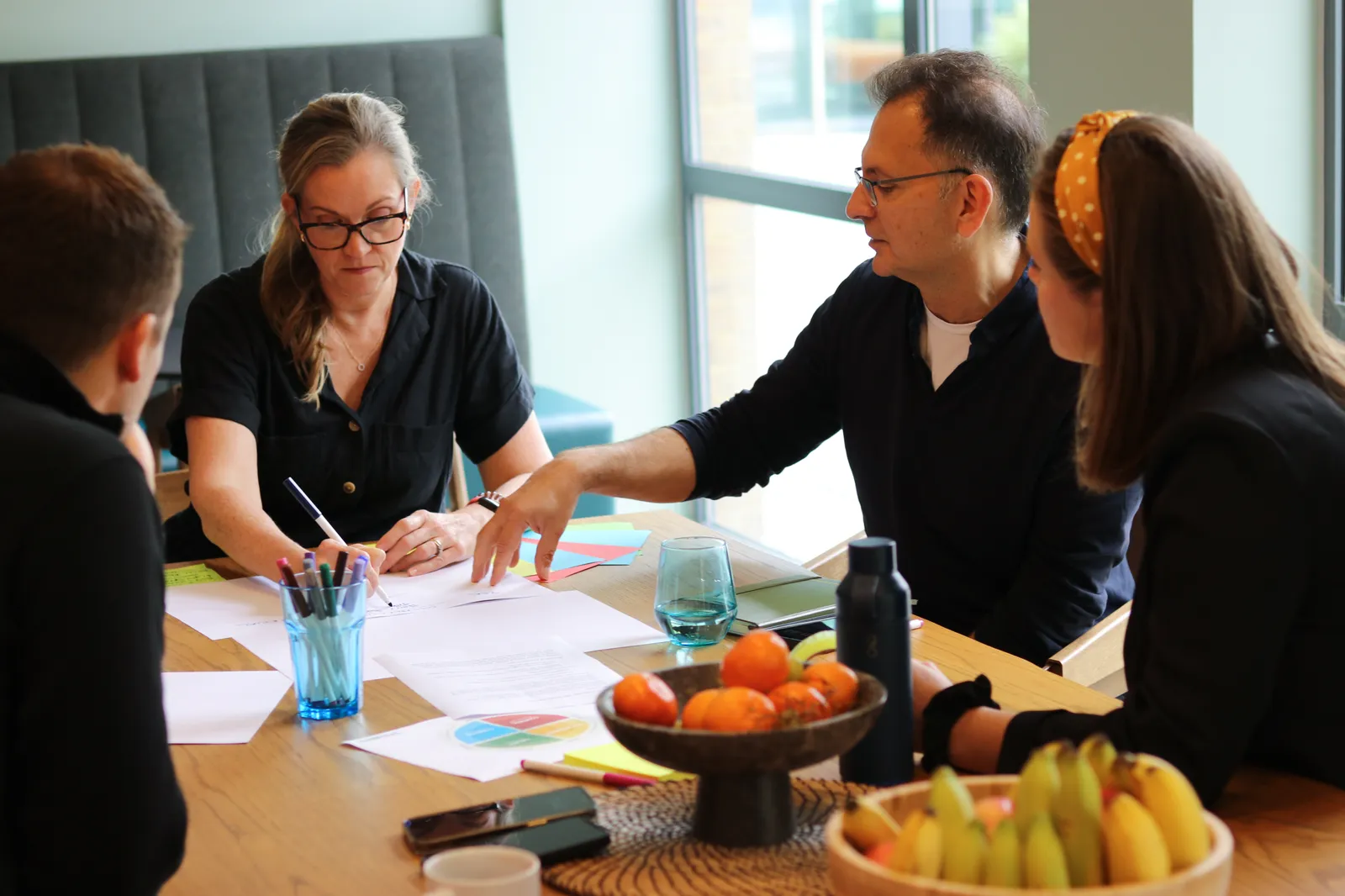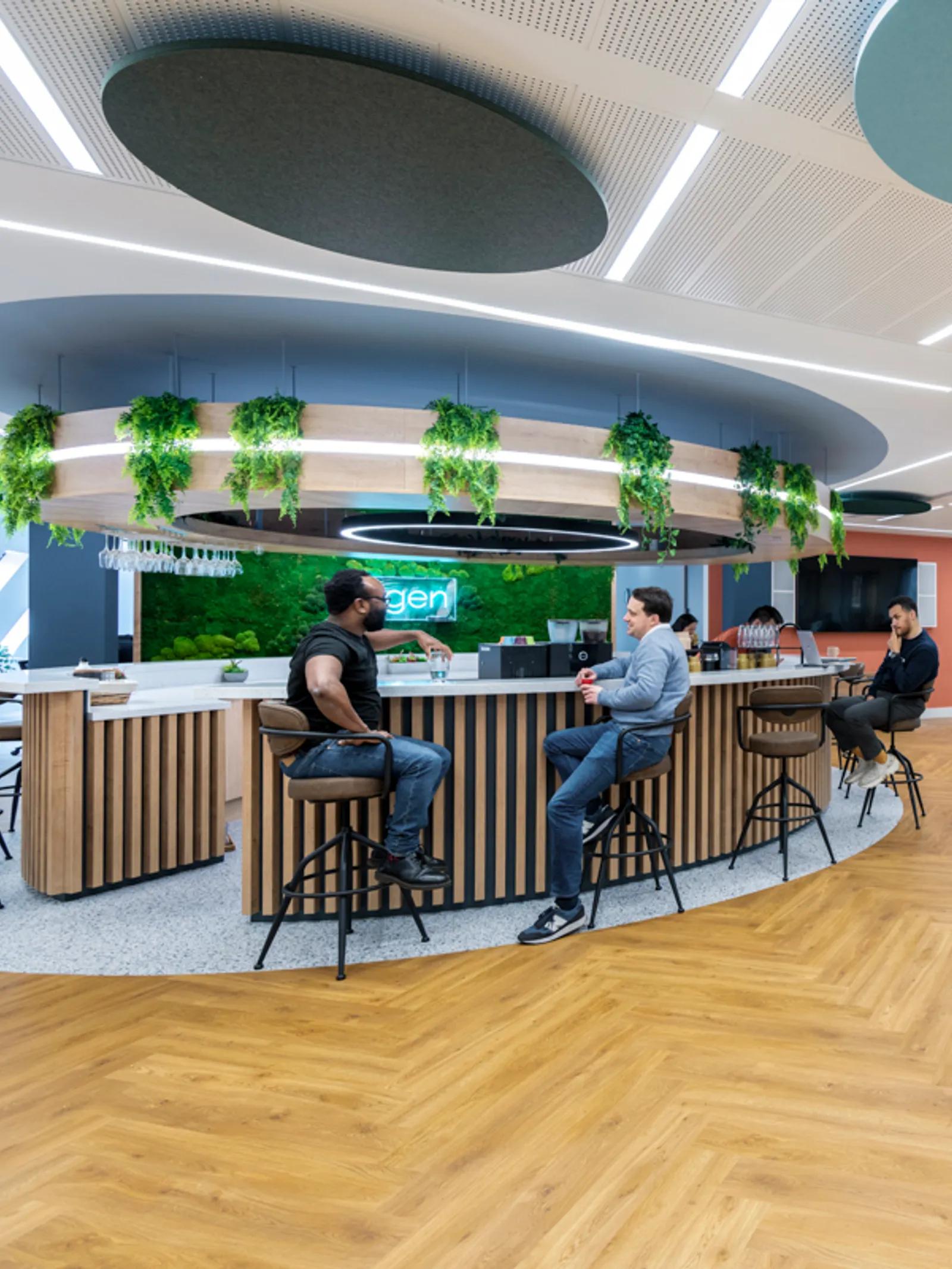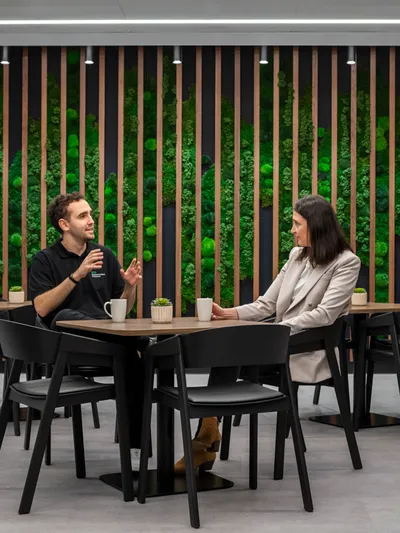The Creative Process of Building a Workplace Community
In the first installment of our new series on creating a successful workplace community, we delve into the findings of a special Area workshop exploring the relationship between community-building and cultural values. Can design act as a bridge between the two?
As the rise of hybrid and remote working reshapes our connection with physical offices, organisations are increasingly driven to foster a sense of community within a flexible working model.
But what does 'community' mean in a more distributed world of work? How are communities created and sustained in the workplace? How do underlying cultural values act to bind them together? And what role can interior design play in bringing communities to life?
These were the questions that Area sought to examine in a half-day creative workshop in autumn 2023, attended by over 25 participants from our design teams and partners.
The workshop was facilitated by a team from WORKTECH Academy, an international knowledge platform and membership club on the future of work, led by Professor Jeremy Myerson, co-author of Unworking: The Reinvention of the Modern Office. Area is a global partner of WORKTECH Academy.
Sense of Belonging:
The workshop commenced with participants individually describing a community to which they feel or have felt a sense of belonging. A framework common in academic research was used to capture their answers.
This framework includes five different types of community:
- Place-based community – based on geographical boundaries, e.g., a town or village
- Community of interest – centred around shared interests and pursuits, e.g., a golf club or vintage car society
- Identity-placed community – based on religious affiliation or sexual orientation, for example
- Needs-based community – such as a soup kitchen or blood donation centre
- Community of practice – formed around a network of professionals with common goals, e.g., an architects’ association or radiologist group in a hospital.
The experiences of workshop participants were mapped on a large wall chart displaying a diagram of different types of communities under the headings: ‘Place,’ ‘Interest,’ ‘Need,’ ‘Identity,’ and ‘Practice.’
Communities described ranged from sports clubs and university groups to religious organisations and family networks. Place, identity, and interest-based communities were more common among participants than need or practice groups.
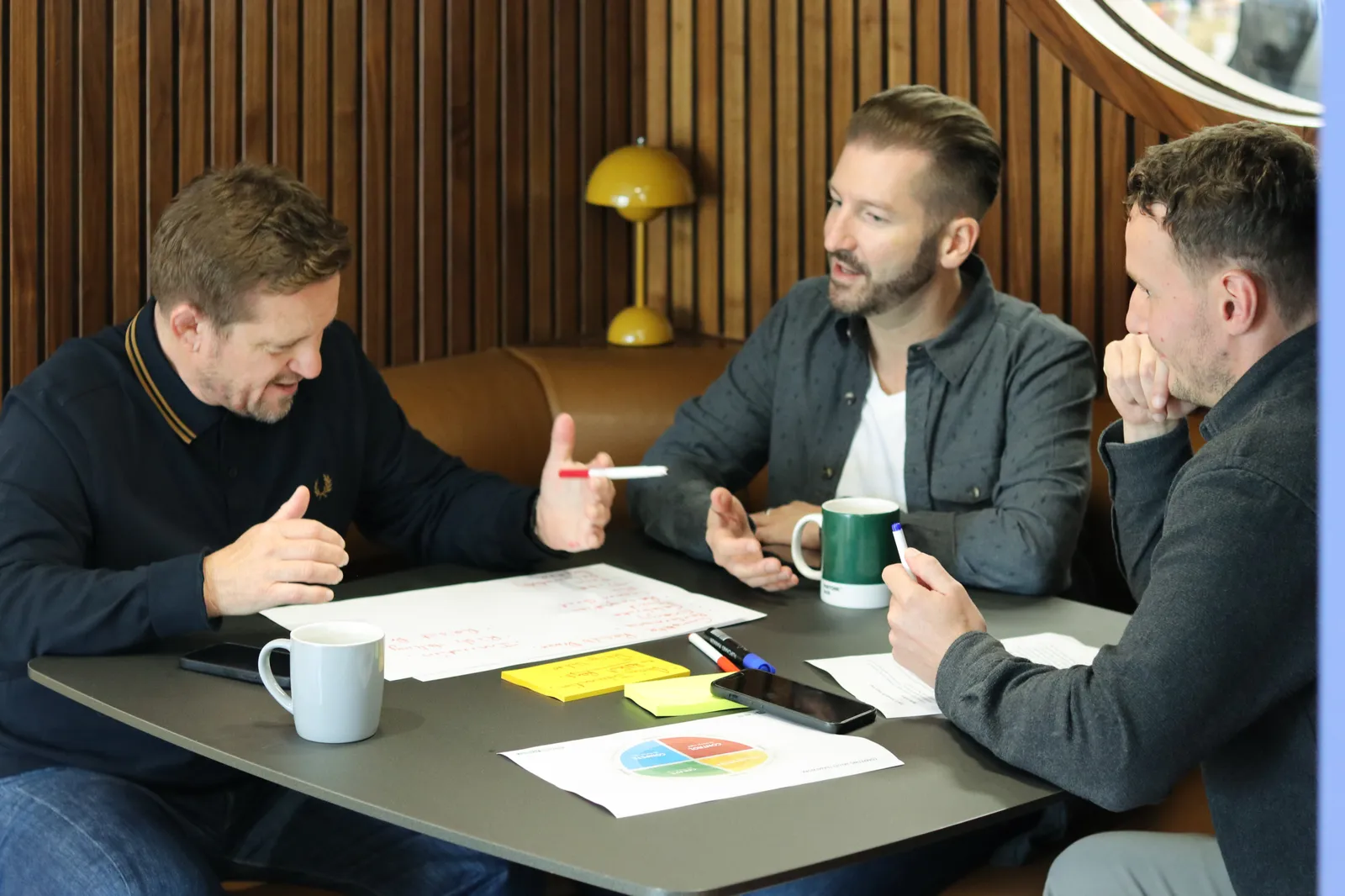
Cultural Values Identified:
Participants then identified the cultural values that made them feel part of a community, working in small groups based on who posted their community experiences under each heading ('Place,' 'Interest,' 'Need,' 'Identity,' or 'Practice'). Culture was defined in this context as a set of shared assumptions, values, artifacts, and behaviours that guide what happens inside the organisation or group.
Several cultural values were identified as generic to all categories, such as feeling psychologically safe, in control, that you belong, and able to access knowledge. More specifically, place-based communities required shared memories, social responsibility, pride, and passion; communities of interest required peer pressure and encouragement, a sense of inclusion, discipline, and structure; and communities of practice required professional respect, mutual support, and common qualifications.
Interest and Influence:
The workshop then focused on what makes a great workplace community by applying ideas and insights about cultural values to the specific context of workplace design.
A special mapping diagram was created for use by Area, based on the axes of ‘level of interest’ (engagement with the community) and ‘level of influence’ (profile and presence within the community). This was used to chart different stages of workplace engagement, from just being 'in the loop' and 'basic involvement' to 'active participation' and becoming a 'key player' in the community.
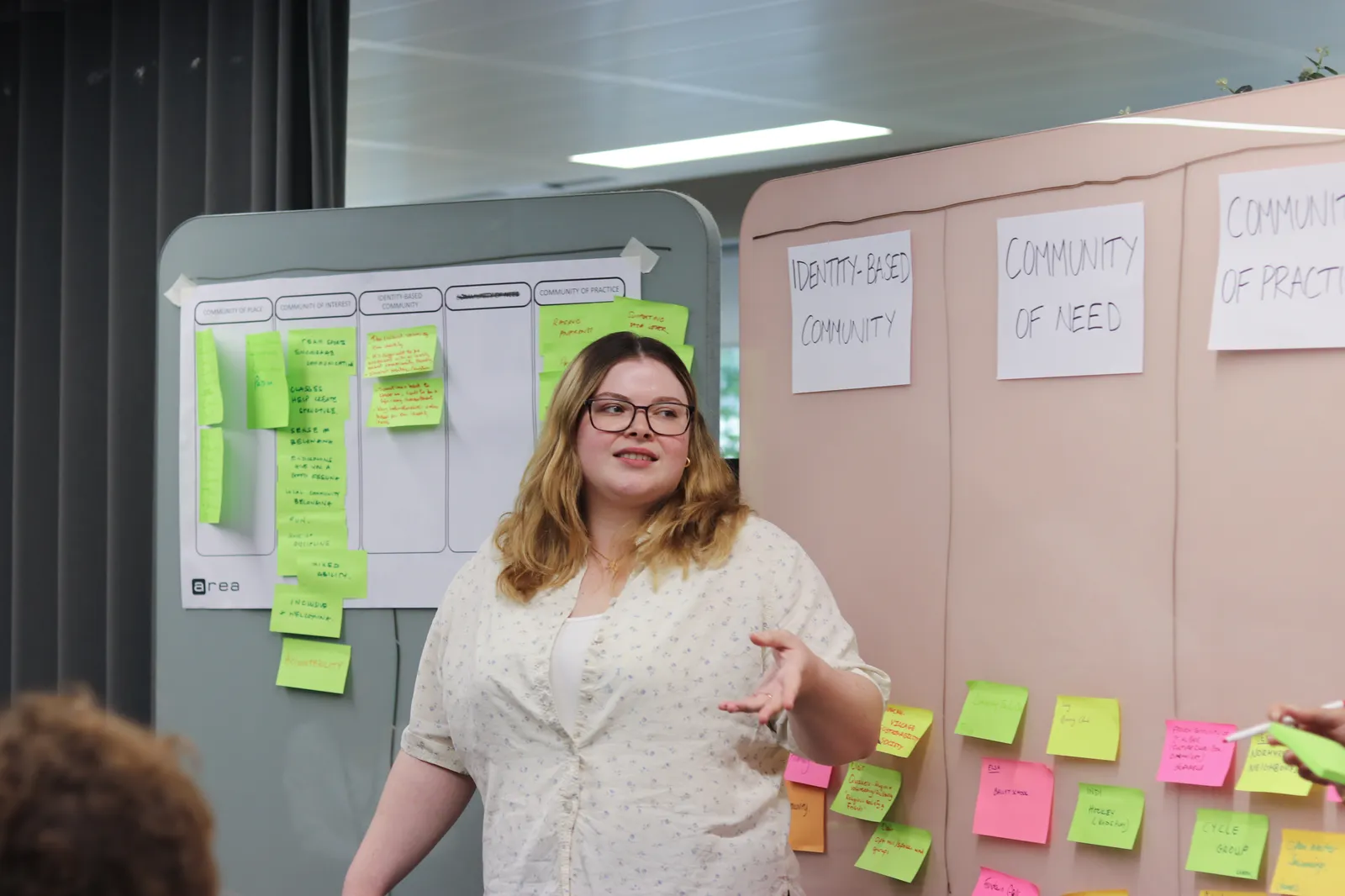
What the workshop process revealed was significant in terms of making and evaluating design decisions. Just keeping employees in the loop (low level of interest, low level of influence) required basic knowledge-sharing, communications, and standards/protocols. To move up to a basic level of community involvement (more interest and influence) required building support, trust, respect, inclusivity, and psychological safety.
Active participation (higher levels of interest and influence) demanded that the workplace provide choice, fun, energy, new ideas, storytelling, and vision for the 'tribe' as well as corporate memory. At the highest levels of interest and influence, the workplace needed a common purpose, shared rituals, moments of celebration, and a sense of creating a legacy for people to feel they are key players in the community.
The workshop concluded with a design sprint to explore how cultural values can be translated into spatial design concepts for workplace communities. Working in four teams, participants were given four different workplace cultures ('Collaborate,' 'Create,' 'Control,' and 'Compete') based on an academic model by Jeff DeGraff, University of Michigan, and asked to design an office environment that reflected those values.
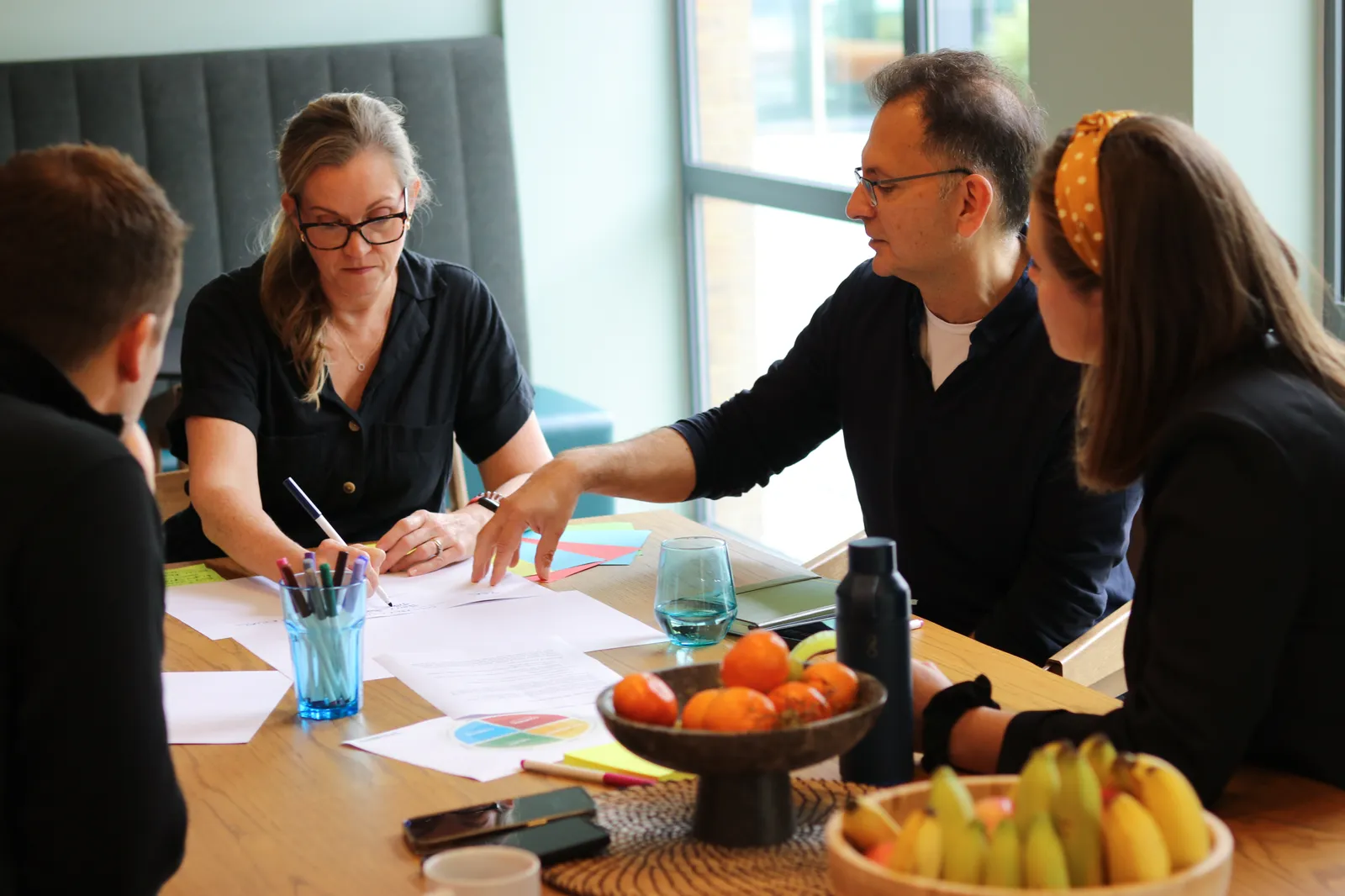
‘Collaborate’ is about a ‘clan’ culture of doing things together; ‘Create’ is about innovating and doing things first; ‘Control’ is a ‘hierarchy culture’ focused on doing things right; and ‘Compete’ is about being market-driven and doing things fast.
Spatial Concepts:
Through discussion, modelling, and sketching, the design sprint generated a series of spatial concepts: the collaborative environment, for instance, provided a space of focus and structure for community decision-making and knowledge sharing; the creative environment was agile and boundaryless, allowing the community to effectively build its own space; the control space presented a hub-and-spoke model combining rigidity with fluidity; and the compete space was designed as an energetic, rewards-driven environment with best-in-class technology.
What the outputs of the workshop revealed was that organisations need to think carefully about the relationship between building community and building culture. The two are often seen as interchangeable, but cultural values shape how communities operate and behave, rather than the other way around.
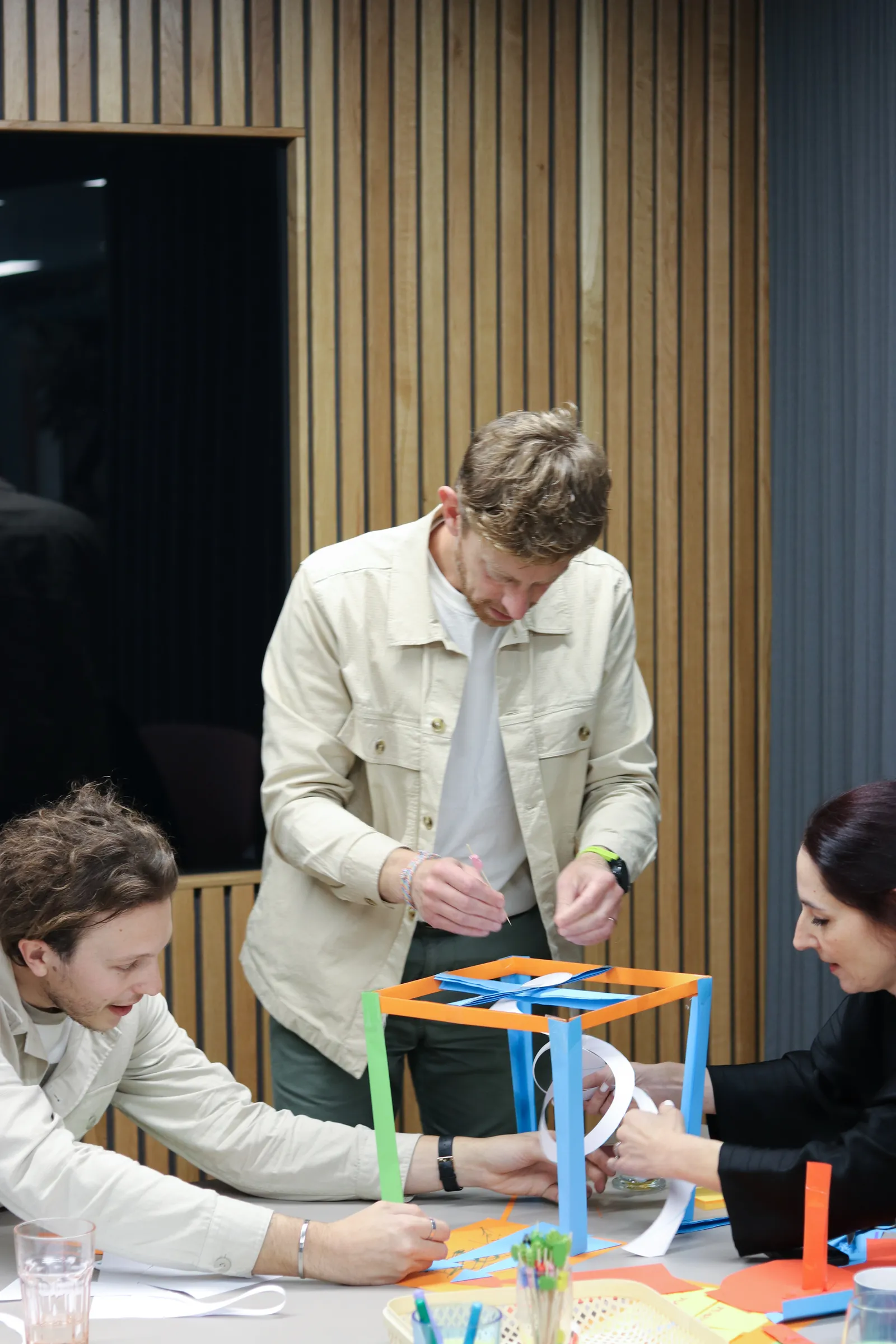
It was clear from our group research that design can be an important bridge between the two. It can make cultural values visible whether in a physical office space or across a more distributed ecosystem of work. In summary, design’s role as a signifier and reinforcer of company culture can contribute to the making of workplace communities with high levels of engagement, belonging, and presence. This is what all organisations are looking for in the flexible new world of work.
In the second instalment, we investigate organisations with distinct cultures and examine how spatial and interior design can both express and enhance their cultural values. Learn more.
Elevate Your Workplace Experience. For expert guidance on creating a thriving workplace community tailored to your organisation, contact Area today.
